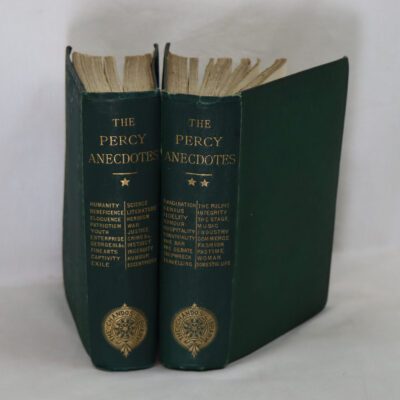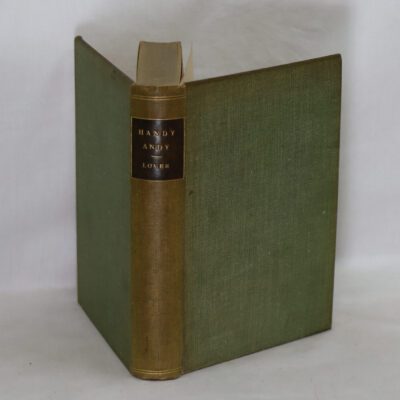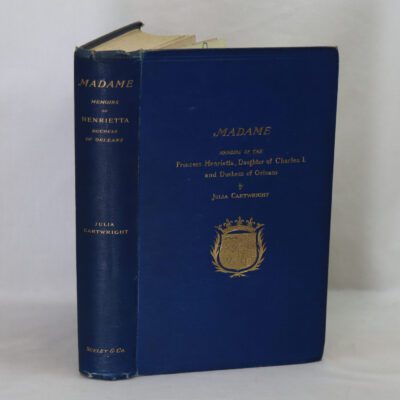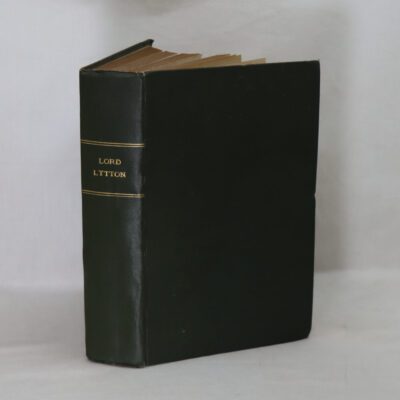Jane Eyre. Shirley. In one Volume.
By Charlotte Bronte (Currer Bell)
Printed: 1891
Publisher: Frederick Warne & Co. London
| Dimensions | 15 × 23 × 2 cm |
|---|---|
| Language |
Language: English
Size (cminches): 15 x 23 x 2
Condition: Very good (See explanation of ratings)
FREE shipping
Item information
Description
Maroon calf spine with gilt title and banding. Textured cloth boards
We provide an in-depth photographic presentation of this item to stimulate your feeling and touch. More traditional book descriptions are immediately available
-
Note: This book carries a £5.00 discount to those that subscribe to the F.B.A. mailing list
For conditions, please view our photographs. A nice clean extremely rare copy from the library gathered by the famous Cambridge Don, computer scientist, food and wine connoisseur, Jack Arnold LANG. This most rare rendition was a personal favourite of Jack’s mother.
The publisher, Frederick Warne & Co. London, by repute, liaised with an associate of Arthur Bell Nicholls (6 January 1819 – 2 December 1906) who was the husband of the English novelist Charlotte Brontë for the last nine months of her life. Thus in 1891 these NEW EDITIONS of these two works were issued with the intention of reenergising Charlotte’s original wishes for her work. Although there remains evidence for the reconstruction of these NEW EDITIONS, Martin Frost and Frost Books and Artifacts Limited doubts Frederick Warne & Co. of London’s good intentions. Hence, the reduced price of £1,850 as opposed to some £15,000 should the authenticity of this revised edition prove correct.
Jane Eyre (originally published as Jane Eyre: An Autobiography) is a novel by the English writer Charlotte Brontë. It was published under her pen name “Currer Bell” on 19 October 1847 by Smith, Elder & Co. of London. The first American edition was published in January 1848 by Harper & Brothers of New York. Jane Eyre is a bildungsroman that follows the experiences of its eponymous heroine, including her growth to adulthood and her love for Mr Rochester, the brooding master of Thornfield Hall. The novel revolutionised prose fiction, being the first to focus on the moral and spiritual development of its protagonist through an intimate first-person narrative, where actions and events are coloured by a psychological intensity. Charlotte Brontë has been called the “first historian of the private consciousness” and the literary ancestor of writers such as Marcel Proust and James Joyce.
The book contains elements of social criticism with a strong sense of Christian morality at its core, and it is considered by many to be ahead of its time because of Jane’s individualistic character and how the novel approaches the topics of class, sexuality, religion and feminism. Jane Eyre, along with Jane Austen’s Pride and Prejudice, is one of the most famous romance novels. It is considered one of the greatest novels in the English language, and in 2003 was ranked as the tenth best-loved book in Britain by the BBC in The Big Read poll.
Shirley, A Tale is an 1849 social novel by the English novelist Charlotte Brontë. It was Brontë’s second published novel after Jane Eyre (originally published under Brontë’s pseudonym Currer Bell). The novel is set in Yorkshire in 1811–12, during the industrial depression resulting from the Napoleonic Wars and the War of 1812. The novel is set against the backdrop of the Luddite uprisings in the Yorkshire textile industry.
The novel’s popularity led to the surname Shirley becoming popular as a first name for women. Brontë tells the reader it was a tradition in the family to only give this surname as a first name to male children. It wasn’t commonly used as a first name in England before the book. It is now regarded as a female first name. Unlike Jane Eyre, which is written in the first person and narrated by the title character, Shirley is narrated by an omniscient but unnamed third-person narrator. For her third novel Villette, Brontë returned to first-person narration. Coming soon after Jane Eyre, which was extremely successful, Shirley originally received a muted reception from critics.
Charlotte Nicholls (née Brontë; 21 April 1816 – 31 March 1855), commonly known by her maiden name Charlotte Brontë was an English novelist and poet, and was the elder sister of Emily, Anne and Branwell Brontë. She is best known for her novel Jane Eyre, which was first published under the pseudonym Currer Bell. Jane Eyre was a great success on publication, and has since become known as a classic of English literature.
Charlotte was the third of six siblings born to Maria Branwell, the daughter of a Cornish merchant, and Patrick Brontë, an Irish clergyman. Maria died when Charlotte was only five years old, and three years later, Charlotte was sent to the Clergy Daughters’ School at Cowan Bridge in Lancashire, along with her three sisters, Maria, Elizabeth and Emily. Conditions at the school were appalling, with frequent outbreaks of disease. Charlotte’s two elder sisters fell ill there and died shortly afterwards at home; Charlotte attributed her own lifelong ill-health to her time at Cowan Bridge, and later used it as the model for Lowood School in Jane Eyre. In 1831, Charlotte became a pupil at Roe Head School in Mirfield, but left the following year in order to teach her sisters, Emily and Anne, at home. In 1835, Charlotte returned to Roe Head as a teacher. In 1839, she accepted a job as governess to a local family, but left after a few months. In 1842, Charlotte joined the Heger Pensionnat, a girls’ boarding school in Brussels, as a student, then later as a teacher, in the hope of acquiring the skills required to open a school of her own. However, she was obliged to leave after falling in love with the school’s director, Constantin Heger, a married man, who inspired both the character of Rochester in Jane Eyre, and Charlotte’s first novel, The Professor. Charlotte, Emily and Anne then attempted to open a school in Haworth, but failed to attract pupils. In 1846 the sisters published a collection of poems under the pseudonyms Currer, Ellis, and Acton Bell. Although Charlotte’s first novel, The Professor, was rejected by publishers, her second novel, Jane Eyre, was published in 1847, attracting both praise and controversy. The sisters’ true identities were revealed in 1848, and by the following year Charlotte was known in London literary circles. In 1854, Charlotte married Arthur Bell Nicholls, her father’s curate. She became pregnant shortly after her wedding in June 1854, but died on 31 March 1855, possibly of tuberculosis, although there is evidence that she may have died from hyperemesis gravidarum, a complication of pregnancy.
Want to know more about this item?

Related products
Share this Page with a friend












